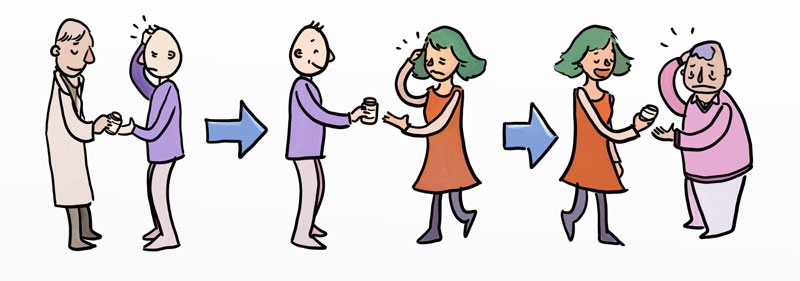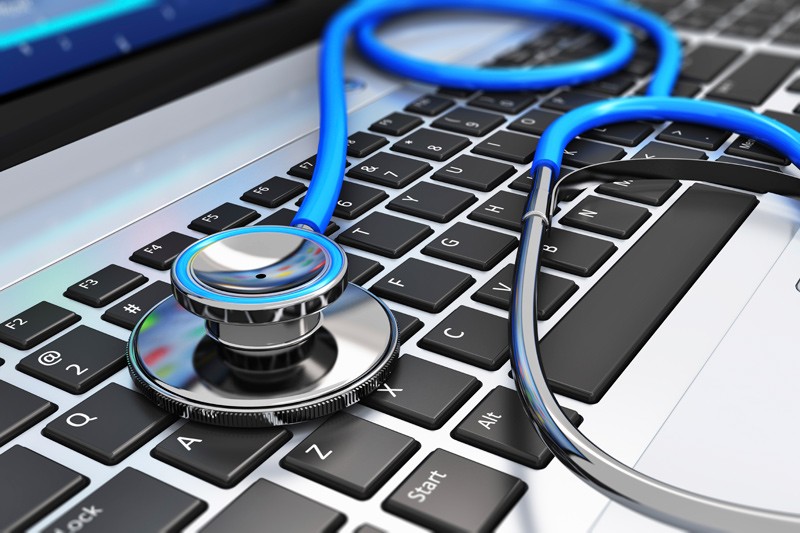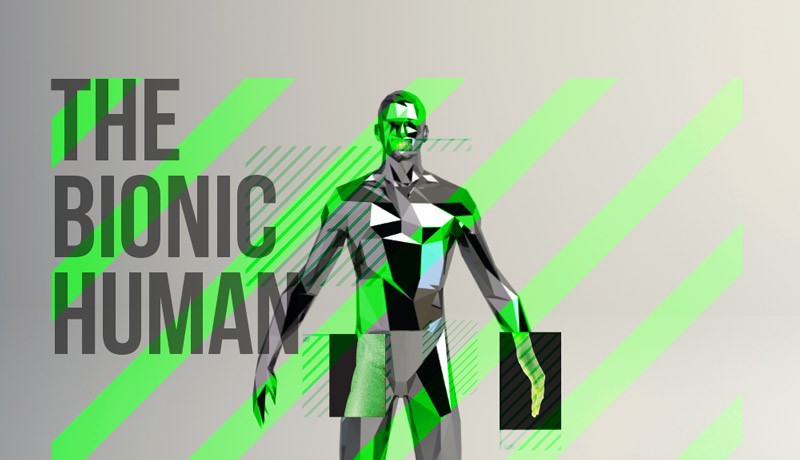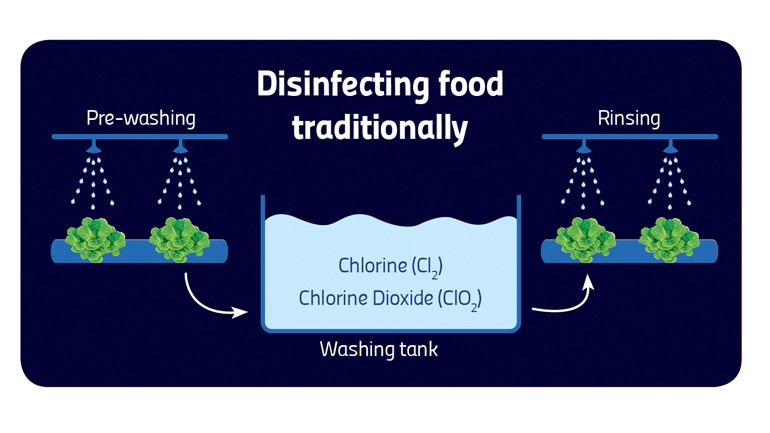Let us fish4tomorrow
All over the world, governments and stakeholders are trying to cope with overfishing. Overfishing is when too much fish is caught which leads to an overall degradation of the marine ecosystem. It is the non-sustainable use of ocean resources. Words by J.D. Farrugia
Continue reading
Think ICT in Health Care
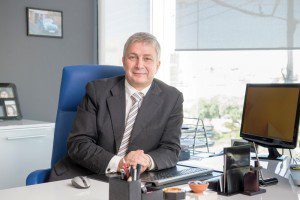
I have been directly involved in ICT for over 30 years. The last 10 years have been all dedicated to ICT in health.
I have visited hospitals and health centres in the United States, Canada, the United Kingdom, Ireland and Italy. During the several health conferences I have attended, I met with people from practically every corner of the world. Their common denominator: no health system is sustainable unless ICT is perceived as an enabler to assist health providers deliver an improved and more efficient care service that governments can afford.”Malta shares this concern. The added pressure is its ageing population.
Q:How can ICT truly reduce the financial pressures on our Health Service and make it sustainable?
A:Malta needs to develop a culture where citizens realise their responsibility to monitor their own health and maintain their own online electronic medical record. This can be done through daily, weekly or monthly monitoring of vital signs such as blood pressure, weight and others. Studies prove that people using eMonitoring services take better care of their own health.
I urge the Ministry of Health to run a simple pilot project in Malta. It could be run amongst the diabetic community. The pilot project would include 1,000 people. 500 of them will use the standard glucose-monitoring device while the other 500 will use a personal, electronic glucose-monitoring device. Within three to six months the results will show the superiority of eMonitoring devices for patient care. These existing health tools can enable people to live healthier lives and stay away from our overburdened hospital. The key is to control a condition without depending on medicines.
Q:Length of stay in hospitals and outpatient visits can be reduced through eMonitoring devices. How?
A:How many patients remain in hospital after medical intervention to have their vital signs monitored? Using these devices patients can be discharged from Mater Dei sooner by being given an eMonitoring kit to monitor themselves from home. The data would be sent electronically to Mater Dei for doctors or clinicians to analyse. These devices could reduce the patient length of stay and make more beds available at Mater Dei translating into reduced costs and waiting lists. They could alleviate the number of outpatient visits that would reduce pressure on the infrastructure and workforce providing more time to increase care quality. Such devices provide an opportunity for every Maltese citizen to have an online electronic medical record that would be always available to clinicians and general practitioners.
My vision for the Maltese health service is one of empowerment. The patient will be enabled to take better care of him or herself and become more accountable, disciplined, and committed to self-healthcare in the same way someone is committed to their job or hobby.
Ivan Bartolo is the Chief Executive Officer of 6PM, a leading IT company delivering award-winning health care products. emCare, a subsidiary of 6PM, provides eMonitoring services. For more information visit www.6pmsolutions.com and www.emcare360.com
Shipping’s Black Cloud
Over summer Dr Edward Duca visited the beautiful Island of Gozo, meeting Prof. Ray Ellul and his team based in Xewkija and the Giordan Lighthouse. Gozo is a tourist hotspot because of its beautiful landscapes, churches, and natural beauty. These same reasons attracted Ellul to obtain baseline readings of air pollutants; human effects should be minimal. Their equipment told them a different story.
They’re very big, anything from 10,000 tonnes to 100,000 tonnes,’ atmospheric physicist Prof. Ray Ellul is telling me about the 30,000 large ships his team observed passing between Malta and Sicily over a year. This shipping superhighway sees one third of the world’s traffic pass by carrying goods from Asia to Europe and back.
The problem could be massive. ‘A typical 50,000 tonner will have an engine equivalent to 85 MW,’ Malta’s two electricity plants churn out nearly 600 MW. You only need a few of these to rival the Islands’ power stations.
Ellul continues, ‘this is far far worse. We are right in the middle of it and with winds from the northwest we get the benefit of everything.’ Northwest winds blow 70% of the time over Malta and Gozo, which means that around two thirds of the time the pollutants streaming out of these ships are travelling over Malta. Even in Gozo, where traffic is less intense, air quality is being affected.
“Ships currently use heavy fuel oil with 3.5% sulfur; this needs to go down to at least 0.5%. The problem is that it doubles cost”
Malta is dependent on shipping. Malta’s Flag has the largest registered tonnage of ships in Europe; shipping brings in millions for Malta. We cannot afford to divert 30,000 ships to another sea. Yet Malta is part of the EU and our politicians could ‘go to Brussels with the data and say we need to ensure that shipping switches to cleaner fuels when passing through the Mediterranean.’ Politicians would also need to go to the Arab League to strike a deal with North Africa. Ships currently use heavy fuel oil with 3.5% sulfur; this needs to go down to at least 0.5%. The problem is that it doubles the costs. Malta’s battle at home and abroad won’t be easy, but the Baltic Sea has already taken these measures.
German Dreams
The research station in Gozo is a full-fledged Global Atmospheric Watch station with a team of five behind it. Now it can monitor a whole swathe of pollutants but its beginning was much more humble, built on the efforts of Ellul, who was drawn into studying the atmosphere in the 80s when he shifted his career from chemistry to physics.
In the early 90s the late rector, Rev. Prof. Peter Serracino Inglott, wanted the University to start building some form of research projects. ‘At that time, we knew absolutely nothing about what was wrong with Maltese air and Mediterranean pollution,’ explained Ellul. Building a fully fledged monitoring station seemed to be the key, so Ellul sent ‘handwritten letters with postage stamps’ to the Max Planck Institute in Mainz. Nobel prize winner Paul J. Crutzen wrote back inviting him to spend a year’s sabbatical in Germany, but their help didn’t stop there. ‘He helped us set-up the first measuring station, [to analyse the pollutants] ozone, then sulphur dioxide, then carbon monoxide. That’s the system we had in 1996 — […] 2 or 3 instruments.’
They lived off German generosity until 2008 when Malta started tapping into EU money. After some ERDF money and an Italy-Malta project on Etna called VAMOS SEGURO (see Etna, THINK issue 06, pg. 40), Ellul now manages a team of five. In homage to his early German supporters he has structured the research team around a Max Planck model — ‘one of the best systems in the World for science’.
Paradise Lost?
Getting data about ships is not easy. ‘It is very sensitive information and there is a lot of secrecy behind it,’ explains Ing. Francelle Azzopardi, a Ph.D. student in Ellul’s team. It is also very expensive. Lloyd’s is the World’s ship registry that tracks all ships, knowing their size, location, engine type, fuel used — basically a researcher’s dream. However, they charge tens of thousands. Ellul took the decision that they gather all the data themselves.
After 2004, all international ships above 300 gross tons need to have a tracking device. Automatically, these ships are traced around the world and anyone can have a peek on www.marinetraffic.com (just check the traffic around Malta). Every half hour the team’s administrator Miriam Azzopardi saves the data then integrates it into the Gozitan database. This answers the questions: where was this ship? which ship was it? how big is it? Easy.
“Ship emission expert James Corbett calculates that worldwide around around 60,000 people die every year due to ship emissions”
If only! The problem is that the researchers also need to know fuel type, engine size, pollution reduction measures, and so on. Then they would know which ship is where, how many pollutants are being emitted, and how many are reaching Malta and Gozo. To get over this hurdle, they contacted Transport Malta (more than once) to ask for the information they needed. ‘About 50% of the ships passing there [by us or Suez are] Malta registered,’ explained Ellul. With this information in hand they could put two and two together. They could create a model for ship emissions close to the Islands and use the model to get the bigger picture.
Enter their final problem: how do you model it? Enter the Finns. Ing. Francelle Azzopardi travelled to the Finnish Meterological Institute. They had already modeled the Baltic Sea, now they wanted access to the Maltese data, in return the Maltese team wanted access to their model called STEAM.
STEAM is a very advanced model. It gathers all the ships’ properties like engine power, fuel type, and ship size. This is combined with its operating environment including speed, friction, wave action, and so on. STEAM then spits out where the team should be seeing the highest pollution indicators. Malta was surrounded.
Apart from the model, the team have seen a clear link between ships and pollution. At the Giordan lighthouse they can measure a whole host of pollutants sulphur dioxide, various nitrogen oxides, particulate matter, black and brown carbon levels, ozone, radioactivity levels, heavy metals, Persistent Organic Pollutants (POPs) and more. When the wind blows from the Northwest, they regularly show peaks of sulfur dioxide, nitrogen oxides, carbon dioxide, carbon monoxide, hydrocarbons which are all indicative of fossil fuel burning either from ships or Sicilian industry. They also picked up relatively high levels of heavy metals especially Vanadium, a heavy metal pollutant. Such metals are more common in heavy fuel oil used by ships.
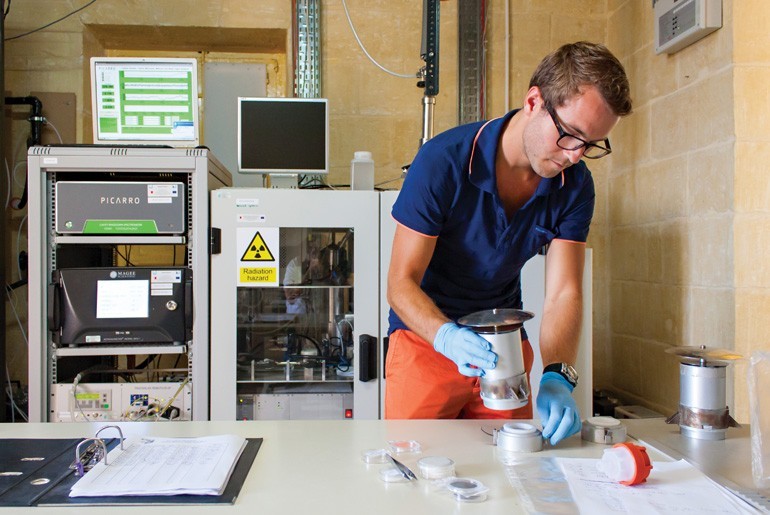
Alexander Smyth is the team’s research officer who spends three months in Paris every year analysing filters that capture pollutants from the atmosphere. Two different filter types are placed in the Giordan Lighthouse. One filter for particles smaller than 2.5 micrometers and another filter for particles around 2 to 10 microns. ‘With the 2.5 filter we can see anthropogenic emissions or ship emissions because they tend to be the smaller particles. The filters are exposed for three to four days, and then they need to be stored in the fridge. Afterwards, I take them to Paris and conduct an array of analyses,’ continued Alexander. The most worrying pollutant he saw was Vanadium.
Vanadium is a toxic metal. When inhaled, ‘it can penetrate to the alveoli of the lungs and cause cancer, a worst case scenario,’ outlined Alexander. It can also cause respiratory and developmental problems — none are good news. The only good news is that ‘they are in very small amounts’. Quantity is very important for toxicity, and they are seeing nanograms per cubic metre, a couple of orders of magnitude more are needed to cause serious problems. No huge alarm bells need to be raised, although Vanadium does stick around in bones and these effects still need more studies.
Vanadium seems to be coming from both Malta and shipping traffic. ‘The highest peaks of vanadium are from the south [of Malta, but the largest number of times I detected came] from the northwest, [from ships],’ said Smyth. ‘There is a larger influence from ships compared to local pollution at the Giordan lighthouse.’
Vanadium is not the only pollutant that could be affecting the health of Maltese citizens. Smyth also saw lots of different Persistent Organic Pollutants (POPs). At low concentrations these compounds can affect immunity leading to more disease, at higher concentrations they can lead to cancer. The local researchers still need to figure out their effect on Malta’s health. Francelle Azzopardi also saw peaks of sulfur dioxide and nitrogen oxides. No surprise here as shipping is thought to cause up to a third of the World’s nitrogen oxides and a tenth of the sulfur dioxide pollution.
Inhaling high levels of sulfur dioxide leads to many problems. It is associated with respiratory disease, preterm births, and at very high levels, death. It can affect plants and other animals. Nitrogen oxides also cause respiratory disease, but can also cause headaches, reduce appetite, and worsen heart disease leading to death. These are pollutants that we want to keep as low as possible.
Ship emission expert James Corbett (University of Delaware) calculates that worldwide around 60,000 people die every year due to ship emissions. Most deaths come from the coastlines of Europe, East Asia, and South Asia. Shipping causes around 4% of climate change emissions. This is set to double by 2050. In major ports, shipping can be the main cause of air pollution on land.
Another unexpected pollutant was ozone, normally formed when oxygen reacts with light. Yet the Giordan lighthouse was not the first to start measuring this gas. It all started with the Jesuits, scholarly catholic monks.
Monks at work
A lot of time is needed to see changes in our atmosphere. Researchers need to gather data over years. To speed up the process, Ellul was hunting around Malta and Gozo for ancient meteorological data about the Islands’ past atmosphere.
He was tipped off that there were still some records at a seminary in Gozo. ‘We expected to find just meteorological data and instead we also found ozone data as well. It was a complete surprise and a stroke of very good luck. We were able to find out what happened to ozone levels in the Mediterranean over the last hundred years.’
Jesuit monks meticulously measured ozone levels from 1884 to 1900. They analysed them seeing that the concentration of ozone was a mere 8 to 12 parts per billion by volume, ppbv. Ellul compared these to a 10-year study he conducted from 1997 to 2006. ‘We measure around 50ppb on average throughout the year,’ which is nearly 5 times more over a mere 100 years.
The situation is quite bad for Malta. In the past, the minimum was in summer and the maximum in winter and spring. Now, this has reversed with spring and summer having the highest ozone levels because of the reactions between hydrocarbons and nitrogen oxides. These come from cars, industry, and ships.
Over the Eastern Mediterranean ozone levels have gradually decreased. Over Malta, in the Central Mediterranean, they remained the same. Ellul thinks this could be because of an anticyclone over the central Mediterranean bringing pollutants from Europe over Malta and Gozo. The levels of ozone in Malta and Gozo are the highest in Europe, and it could be mostly Europe’s fault. Our excessive traffic doesn’t help.
Ozone can be quite a mean pollutant. While stratospheric ozone blocks out harmful UV rays, low-level ozone can directly damage our health or react with other pollutants to create toxic smog. It’s been known to start harming humans at levels greater than 50 ppbv. It inflames airways causing difficulty breathing, coughing and great discomfort. Some research has linked it to heart attacks — a pollutant not to be taken lightly.
Over those 10 years Ellul and his team saw 20 episodes in summer where ozone levels exceeded 90 ppbv. Some were during the night, unlikely to be of local origin but due to transport phenomena in the central Mediterranean and shipping. Ellul does nod towards the possibility of air recirculation from Malta. The atmosphere is a complicated creature.
Plants also suffer from ozone. Above 40 ppbv yield from fields decreases. Gozo is definitely being affected; we could be producing more.
The devil is in the details
Ellul and his team have found a potentially big contributor to the Islands’ pollution. This would be over and above our obvious traffic problem. Yet Ellul admits that ‘there is no particular trend, it’s too short a time span. What it tells us is that what we think is a clean atmosphere is not really a clean atmosphere at all. The levels are significant.’ Azzopardi honestly says ‘I can [only] give you an idea of what is happening’.
The team needs to study the problem for longer. It needs some statistics. Clearly they see a link between ships passing by Malta and peaks in pollution levels, but the Islands need to know if shipping pollution levels beat industry, traffic, or Saharan dust. What is ships’ contribution to Malta’s health problems?
When the team knows the extent of pollution, they can see whether they go above European standards. Ozone already does, and likely to be due to pollution from the European continent. If they can extend it to a whole host of other pollutants that skyrocket above European standards due to ship traffic, then ‘our politicians,’ says Ellul, can go to Brussels to enforce new legislation. That could control Mediterranean shipping traffic to clean up our air. At least it would solve one significant problem that Malta cannot solve on its own.
The main problem is economic. A ship can be made greener by reducing its sulfur fuel content. Low sulfur fuels are double the price of the bunker fuel they currently use. New legislation would need enforcement, which is costly. Ships could also be upgraded, again at a price. Passing these laws is not going to be easy.
Ships have been a pollution black hole for a while. The fuels ships burn contains 3,000 times more sulfur than cars are allowed to burn. Quite unfair. Going back to Corbett’s figures estimating European deaths at 27,000, the current rise in shipping pollution could end up killing hundreds of thousands if not millions before new legislation is enforced. Now that would be truly unfair.
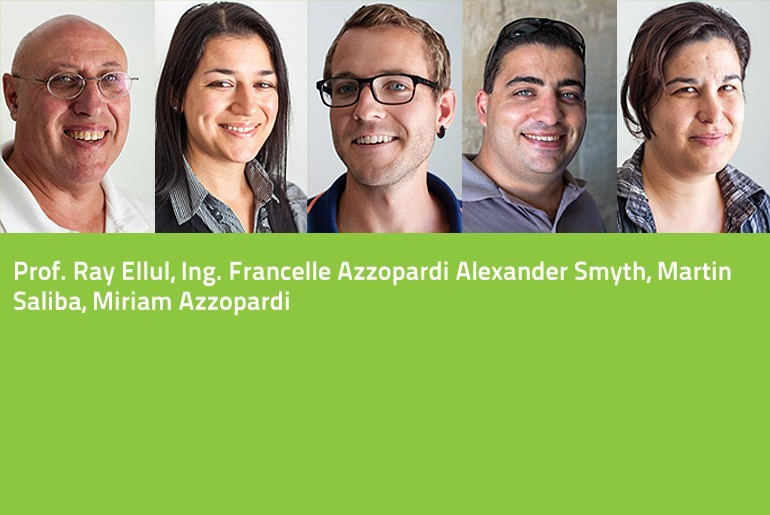
An Intelligent Pill
Doctors regularly need to use endoscopes to take a peek inside patients and see what is wrong. Their current tools are pretty uncomfortable. Biomedical engineer Ing. Carl Azzopardi writes about a new technology that would involve just swallowing a capsule.
Michael* lay anxiously in his bed, looking up at his hospital room ceiling. ‘Any minute now’, he thought, as he nervously awaited his parents and doctor to return. Michael had been suffering from abdominal pain and cramps for quite some time. The doctors could not figure it out through simple examinations. He could not take it any more. His parents had taken him to a gut specialist, a gastroenterologist, who after asking a few questions, had simply suggested an ‘endoscopy’ to examine what is wrong. Being new to this, Michael had immediately gone home to look it up. The search results did not thrill him.
The word ‘endoscope’ derives from the Greek words ‘endo’, inside, and ‘scope’, to view. Simply put, looking inside our body using instruments called endoscopes. In 1804, Phillip Bozzini created the first such device. The Lichtleiter, or light conductor, used hollow tubes to reflect light from a candle (or sunlight) onto bodily openings — rudimentary.
Modern endoscopes are light years ahead. Constructed out of sleek, black polyurethane elastometers, they are made up of a flexible ‘tube’ with a camera at the tip. The tubes are flexible to let them wind through our internal piping, optical fibers shine light inside our bodies, and since the instrument is hollow it allows forceps or other instruments to work during the procedure. Two of the more common types of flexible endoscopes used nowadays are called gastroscopes and colonoscopes. These are used to examine your stomach and colon. As expected, they are inserted through your mouth or rectum.
Michael was not comforted by such advancements. He was not enticed by the idea of having a flexible tube passed through his mouth or colon. The door suddenly opened. Michael jerked his head towards the entrance to see his smiling parents enter. Accompanying them was his doctor holding a small capsule. As he handed it over to Michael, he explained what he was about to give him.
Enter capsule endoscopy. Invented in 2000 by an Israeli company, the procedure is simple. The patient just needs to swallow a small capsule. That is it. The patient can go home, the capsule does all the work automatically.
The capsule is equipped with a miniature camera, a battery, and some LEDs. It starts to travel through the patient’s gut. While on its journey it snaps around four to thirty-five images every second. Then it transmits these wirelessly to a receiver strapped around the patient’s waist. Eventually the patient passes out the capsule and on his or her next visit to the hospital, the doctor can download all the images saved on the receiver.
The capsule sounds like simplicity itself. No black tubes going down patients’ internal organs, no anxiety. Unfortunately, the capsule is not perfect.
“The patient just needs to swallow a small capsule. That is it. The patient can go home, the capsule does all the work automatically”
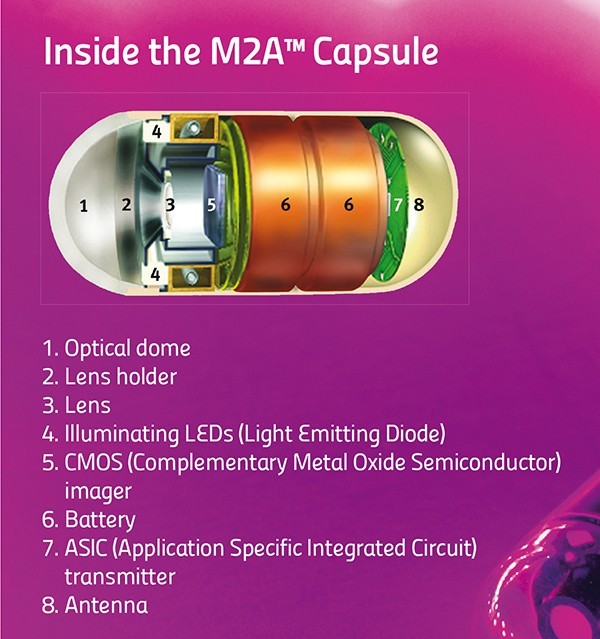 First of all, capsule endoscopy cannot replace flexible endoscopes. The doctors can only use the capsules to diagnose a patient. They can see the pictures and figure out what is wrong, but the capsule has no forceps that allow samples to be taken for analysis in a lab. Flexible endoscopes can also have cauterising probes passed through their hollow channels, which can use heat to burn off dangerous growths. The capsule has no such means. The above features make gastroscopies and colonoscopies the ‘gold standard’ for examining the gut. One glaring limitation remains: flexible endoscopes cannot reach the small intestine, which lies squarely in the middle between the stomach and colon. Capsule endoscopy can examine this part of the digestive tract.
First of all, capsule endoscopy cannot replace flexible endoscopes. The doctors can only use the capsules to diagnose a patient. They can see the pictures and figure out what is wrong, but the capsule has no forceps that allow samples to be taken for analysis in a lab. Flexible endoscopes can also have cauterising probes passed through their hollow channels, which can use heat to burn off dangerous growths. The capsule has no such means. The above features make gastroscopies and colonoscopies the ‘gold standard’ for examining the gut. One glaring limitation remains: flexible endoscopes cannot reach the small intestine, which lies squarely in the middle between the stomach and colon. Capsule endoscopy can examine this part of the digestive tract.
A second issue with capsules is that they cannot be driven around. Capsules have no motors. They tend to go along for the ride with your own bodily movements. The capsule could be pointing in the wrong direction and miss a cancerous growth. So, the next generation of capsules are equipped with two cameras. This minimises the problem but does not solve it completely.
The physical size of the pill makes these limitations hard to overcome. Engineers are finding it tricky to include mechanisms for sampling, treatment, or motion control. On the other hand, solutions to a third problem do exist. This difficulty relates to too much information. The capsule captures around 432,000 images over the 8 hours it snaps away. The doctor then needs to go through nearly all of these images to spot the problematic few. A daunting task that uses up a lot of time, increasing costs, and makes it easier to miss signs of disease.
A smart solution lies in looking at image content. Not all images are useful. A large majority are snapshots of the stomach uselessly churning away, or else of the colon, far down from the site of interest. Doctors usually use capsule endoscopy to check out the small intestine. Medical imaging techniques come in handy at this point to distinguish between the different organs. Over the last year, the Centre for Biomedical Cybernetics (University of Malta) has carried out collaborative research with Cardiff University and Saint James Hospital to develop software which gives doctors just what they need.
Following some discussions between these clinicians and engineers they quickly realised that images of the stomach and large intestine were mostly useless for capsule endoscopes.
Identifying the boundaries of the small intestines and extracting just these images would simplify and speed up screening. The doctor would just look at these images, discarding the rest.
Engineers Carl Azzopardi, Kenneth Camilleri, and Yulia Hicks developed a computer algorithm that could first and foremost tell the difference between digestive organs. An algorithm is a bit of code that performs a specific task, like calculating employees’ paychecks. In this case, the custom program developed uses image-processing techniques to examine certain features of each image, such as colour and texture, and then uses these to determine which organ the capsule is in.
Take colours for instance. The stomach has a largely pinkish hue, the small intestine leans towards yellowish tones, while the colon (unsurprisingly perhaps) changes into a murky green. Such differences can be used to classify the different organs. Additionally, to quickly sort through thousands of images, the images need to be compacted. A specific histogram is used to amplify differences in colour and compress the information. These procedures make it easier and quicker for algorithm image processing.
Texture is another unique organ quality. The small intestine is covered with small finger-like projections called villi. The projections increase the surface area of the organ, improving nutrient absorption into the blood stream. These villi give a particular ‘velvet-like’ texture to the images, and this texture can be singled out using a technique called Local Binary Patterns. This works by comparing each pixel’s intensity to its neighbours’, to determine whether these are larger or smaller in value than its own. For each pixel, a final number is then worked out which gauges whether an edge is present or not (see image).
Classification is the last and most important step in the whole process. At this point the software needs to decide if an image is part of the stomach, small intestine, or large intestine. To help automatically identify images, the program is trained to link the factors described above with the different organ types by being shown a small subset of images. This data is known as the training set. Once trained, the software can then automatically classify new images from different patients on its own. The software developed by the biomedical engineers was tested first by classification based just on colours or texture, then testing both features together. Factoring both in gave the best results.
“The software is still at the research stage. That research needs to be turned into a software package for a hospital’s day-to-day examinations”
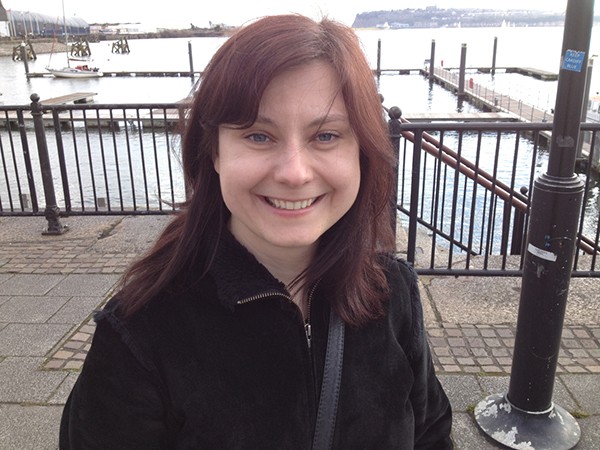
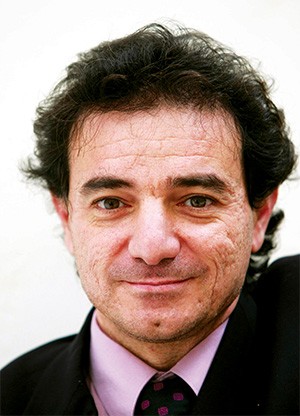
After the images have been labeled, the algorithm can draw the boundaries between digestive organs. With the boundaries in place, the specialist can focus on the small intestine. At the press of a button countless hours and cash are saved.
The software is still at the research stage. That research needs to eventually be turned into a software package for a hospital’s day-to-day examinations. In the future, the algorithm could possibly be inserted directly onto the capsule. An intelligent capsule would be born creating a recording process capable of adapting to the needs of the doctor. It would show them just what they want to see.
Ideally the doctor would have it even easier with the software highlighting diseased areas automatically. The researchers at the University of Malta want to start automatically detecting abnormal conditions and pathologies within the digestive tract. For the specialist, it cannot get better than this.
The result? A shorter and more efficient screening process that could turn capsule endoscopy into an easily accessible and routine examination. Shorter specialist screening times would bring down costs in the private sector and lessen the burden on public health systems. Michael would not need to worry any longer; he’d just pop a pill.
* Michael is a fictitious character
[ct_divider]
The author thanks Prof. Thomas Attard and Joe Garzia. The research work is funded by the Strategic Educational Pathways Scholarship (Malta). The scholarship is part-financed by the European Union — European Social Fund (ESF) under Operational Programme II — Cohesion Policy 2007–2013, ‘Empowering People for More Jobs and a Better Quality of Life’
Etna
The ancients saw volcanoes as the wrath of their mighty gods. Volcanoes have been blamed for clearing whole towns, even planet-wide extinctions. A local team based in Gozo has just found out if Etna affects the Maltese Islands. Words by Dr Edward Duca.
The Bionic Human
Faster, fitter, and flawless? What would it take to build a Bionic Human? Ing. Emmanuel Francalanza delved into research at the Faculty of Engineering to see how Malta could contribute. 3D Art by Jean Claude Vancell
Does Alcohol kill brain cells?
This myth is HUGE! Urban legend says that drinking kills cells, some even say: ‘three beers kill 10,000 brain cells.’ Thankfully, they are wrong.
In microbiology labs, a 70% alcohol 30% water mix is used to clean surfaces pretty efficiently. It seems our neurons are made of sturdier stuff.
Alcohol does affect brain cells. Everyone knows that and it isn’t pretty. Alcohol can damage dendrites, which are delicate neural extensions that usually convey signals to other neurons. Damaging them prevents information travelling from one neuron to another — a problem. Luckily, the damage isn’t permanent.
Music for Clean Food
Everyone eats. Eating food straight out of a packet is the norm in our fast-paced world — a simple fact that makes food science ever more important. We need safe food. THINK editor Dr Edward Duca met up with researcher Dr Vasilis Valdramidis to find out about the latest tech.
Food safety is serious business. In Germany during 2011 a single bug hospitalised over 4,000 people causing 53 deaths. Scientists learnt afterwards that a strain of E. coli had picked up the ability to produce Shiga toxins. These natural chemicals cause dysentery or bloody diarrhoea. The bacteria were living on fresh vegetables and it took German health officials over a month to figure out which farm was responsible.
On the 2 May, German health authorities announced a deadly strain of bacteria in food. By the 26 May, they pointed their finger at cucumbers coming from Spain. They were wrong. The mistake cost the EU over €300 million in farmer reimbursements. Genetic tests found that the bacterium on cucumbers was different than the one which was killing people. The researchers continued to ask people who were infected what they ate: raw tomatoes, cucumbers, and lettuce remained the prime suspects. Till they tested organic local bean sprouts from a farm in Bienenbüttel, Lower Saxony. By the 10 June, the farm was forced to shut down after it was pinpointed as the source. The sprouts were contaminated from the seeds’ source in Egypt.
‘These bean sprouts are found in several ready-to-eat foods, you could have it in your sandwich and not realise that you’re eating it,’ said food scientist Dr Vasilis Valdramidis (University of Malta). This is the reason why it took German officials so long to find the source. Having to rely on people’s memory of what they ate before becoming sick, something as inconspicuous and mild tasting as a bean sprout can be forgotten. Precisely why industrial food safety is so important: it saves lives.
Cleaning food
‘There is no natural sterile environment,’ stated Dr Valdramidis who studies new ways to disinfect ready-to-eat lettuce, cabbage, and bean sprouts to make our food safe. Most bacteria come from nature or during handling. ‘After harvesting, there are 3 different steps for processing fresh produce. First, they are washed to remove all external material. Second, there is the disinfection process. […] Third, they apply a decontamination treatment that most commonly is chlorinated water.’
Dissolving chlorine dioxide powder into water makes most of the industrial chlorinated water. Chlorine is found in tap water so is relatively harmless at low concentrations, but ‘the less we have of this chemical the better for our health, because there are some side effects,’ explained Dr Valdramidis. ‘It can react with the organic substances of food products and produce some compounds […] that aren’t healthy.’
The environment is another problem. Chlorinated water ends up in ground water or other water sources. Elevated levels of chlorine can decontaminate vegetables but also natural habitats.
Dr Valdramidis’ group works to reduce the amount of chemicals, water, and energy used. Fresh water is a precious resource with less than 3% of the world’s water being fresh. In Malta, pressures on fresh water use are intense and the country is facing a little known water crisis. Worldwide energy efficiency is a hot issue, with both environmentalists and industry pushing for greater efficiency and cheaper energy bills.
From Oregano to Music
The herb oregano can be concentrated with its essential oils extracted. Surprisingly, at the right concentration oregano slows bug growth. Dr Valdramidis’ group is taking advantage of this antimicrobial effect to disinfect vegetables. ‘And it tastes better, but it depends on the amount; if you use too much it is bitter.’
The food industry’s bottom line is cost. ‘The extraction process is quite expensive but now the price is going down. [The food industry already] use oregano oil as antimicrobial agents in feeding products for animals. Their aim is to reduce the use of antibiotics. It [oregano] is becoming more and more accessible.’
Oregano oil might be more expensive, but it is a natural product that is non-toxic. Another advantage is that, ‘if the plant cells are relaxed then these essential oils can penetrate’ into the plant disinfecting it thoroughly. Once optimised, it could easily replace chlorine water, reducing the amount of damaging chemicals used.
Oregano could replace chlorine water, but what about the amount of water? Another technique, which uses sound to clean food, could help. Think about ultrasounds used to scan pregnant women. Those ‘operate on megahertz and create images, this [technology] operates on kilohertz and is powerful enough to create physical changes at a microscale’, which means they are high power systems. It works by pulsing sound waves at your submerged vegetable or fruit of choice. The sound creates bubbles that implode, creating a very high pressure and temperature. This energy can kill the bacteria. When Dr Valdramidis gets it right, it cleans the vegetable.
The process is even more extraordinary. The sound wave causes ‘a molecule of water to split and create [the molecules] hydrogen peroxide and other radicals, which are very unstable’ so they react with everything around them (including bacterial DNA), either becoming water again or attacking cells. ‘They affect the membrane of the bacterial cell,’ said Dr Valdramidis, ‘killing it.’ They can also damage plant cells, so the technique needs fine-tuning to get it right. By measuring the appearance, amount of vitamins, enzymes, and other nutrients lost by the procedure, researchers can tweak it to maximise its antimicrobial value and minimise its damage to the vegetable. To continue improving the technique a lot of his work is spent trying to understand exactly how the procedure works and why the bacteria die.
The ultrasound still needs water to work. Water cannot be removed from the equation because bubbles can only form in water and sound also travels better. Water quantity can be reduced. When using chlorinated water, another step is needed to rinse off the chlorine. In this case, it can be skipped. There is an even more radical technique that might bypass water altogether.
A lightning storm
Plasma is made up of ionised air. In nature, plasma is made by lightning, leaving a tell tale ozone smell. Food scientists can pass high frequency electricity through air to create a bacteria-killing plasma stream.
Ionised air kills bacteria because it forms radicals and ozone. Electric discharges create radicals and turn oxygen into highly reactive oxygen radicals (an unstable oxygen atom) or ozone (3 oxygen atoms joined together). These products can react with bacteria and inactivate them. Like sound waves they can also affect food. ‘High levels of ozone can bleach food by oxidising the product. There is no ideal technology,’ stated Dr Valdramidis. The difficulty in all of this is how to kill the bacteria and not the plant. Everyone wants salads with a nice colour, good flavour, and high nutritional value.
On the other hand, the beauty of this technique is that you can zap the food in its packet. So imagine just rinsing the food with a little water, wrapping it up, and finishing off the cleaning process with an electric pulse. The package can be delivered to your local grocer with minimal use of water and your mind at rest. Both sound waves and plasma could also spell the end of excessive chemical treatments.
A computer model of a fruit
Measuring microbe levels is the only certain way to know if food is safe. Traditional methods are labour intensive, time consuming, and expensive. Scientists first need to remove the bacteria from the product, then dilute the bacteria, then count the cells directly with plate counting techniques or under a microscope. More modern techniques use molecular methods such as PCR (Polymerase Chain Reaction) to find out the specific type of bacteria. This can make a huge difference since not all bugs are created equal.
To reduce costs and speed up the process, Dr Valdramidis uses mathematical models to predict the shelf life of products and apply the right decontamination process. ‘We want to predict the amount of bacteria present, so with these equations we are trying to describe how fast the bacteria are inactivated then [how fast those that survive] grow,’ explained Dr Valdramidis. The number of bacteria predicts food safety and how fast it rots.
For mathematical modelling to work, first ‘data needs to be collected […] by performing some experiments. Then I try to describe how the population responds and behaves using these equations. If I can verify this model, then I can come to you and tell you, ‘look, this product has these specific characteristics, within the range of this model, I can tell you that it will expire in 15 days and you don’t need to do any experiments.’ It’s a very powerful tool but it has to be well validated.’ It saves a ton of money, but you must be sure of the model otherwise people could be harmed.
Current maths has its limits. Scientists are still trying to correctly model a single cell. Plant or bacterial cells are complicated machines, with proteins, DNA, and other molecules all jam-packed together working synchronously for a cell’s survival and reproduction. To make things easier, scientists simplify cells when simulating them then consider a whole group of them, a population. Researchers test the whole population. If Dr Valdramidis’ group attempts to model a single bacterial cell’s growth in Malta, he would have to use the University’s supercomputer called ALBERT. Maths on this level uses a lot of computational power.
Taking the cell modelling idea to its extreme, some food scientists are trying to model every plant cell to make a complete fruit — a virtual fruit. They model, ‘the exchange of gases and so on since fruit is still respiring, still alive after harvesting.’ To control the respiration process, they ‘try to control the amount of [the hormone] ethylene, oxygen gas, and so on.’ They also use these models to simulate modified atmospheres around food seeing how they influence respiration rates. Shelf life is affected by plastic packages with different holes sizes, types of plastic, and other parameters. All of these properties are pumped into the mathematical equations and tweaked to maximise shelf life. ‘If you slow rates down, the food lasts longer and can be stored for a longer period,’ explained Dr Valdramidis, which makes both companies and consumers happy.
Working with industry
Dr Valdramidis is young but has a long career in fundamental research. He has modelled and tested the rate of bacterial growth (and inactivation) at changing temperatures, and even investigated how to decontaminate biofilms in industrial food processing plants. Importantly, he has looked into quantifying and speeding up the analysis of microbial levels on food to give an actual ‘best before’ date. His approach always coupled experiments to test his maths and predictions.
Innovations in food science aim to bring down prices, use less water, fewer chemicals, and less energy. For these reasons, Dr Valdramidis is now at a stage where he can collaborate with industrial partners. In Malta, he has already met with the Chamber of Commerce through the creation of a Food Industrial Advisory Platform. With this platform ‘we plan to organise workshops every 6 months. Once to speak about our activities and another to speak about subjects that are of interest to SMEs [Small to Medium Enterprise, or industry].’ Malta is run by food SMEs; they account for 65% of GDP.
Researchers need to work with industry — a statement on everyone’s bucket list. Its importance cannot be understated, since it is unlikely that universities will receive substantially more research funds unless businesses start seeing these institutions as partners. And, they could save or make big bucks by investing in research. Dr Valdramidis’ work is a clear call for collaboration.
Working with others is what drew Dr Valdramidis to Malta. ‘I firmly believe in collaboration. A lot of my [research] publications are not just from the university I would be working in but others as well.’ By opening arms wide open perhaps we can prevent mistakes, like those of the German health authorities, invest in research that reduces waste, and cleans our food just by playing a song at the right energy.
[ct_divider]
Some of the above research is supported by a Marie Curie FP7-Reintegration-Grant within the 7th European Community Framework Programme under the project ‘Development of novel Disinfection Technologies for Fresh Produce (DiTec)’, and part-funded by the Malta Government Scholarship Scheme.
Assisted Conception — IVF and other procedures
Assisted conception procedures arose as a type of treatment for infertility. They opened a whole new range of possibilities for couples that were unable to have children due to a variety of problems. Initially, the difficulty addressed was of blocked or absent fallopian tubes in women. This prevented the oocyte from making contact with sperm, hence preventing the formation of an embryo. Naturally, this also prevented an embryo from moving into the uterus, implanting itself, and developing into a foetus.
In vitro fertilisation bypasses tubes by obtaining oocytes from the ovaries and fertilising these oocytes outside the body (in vitro — in glass). The procedure became a reality in humans with the pioneering work of Steptoe and Edwards and the delivery of Louise Brown in 1974. She gave birth naturally in 1999.
“In our society, infertility is becoming more common and 8 out of 10 couples can experience problems”
With the further development of ICSI (Intra cytoplasmic Sperm Injection) it was possible to fertilise an oocyte (egg) with an individual sperm. This was a breakthrough therapy for men with low or absent sperm counts. 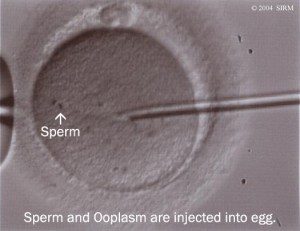 When sperm are lacking in the ejaculate, a doctor can retrieve them directly from the testicles, or the epididymis (a tightly coiled tube from the testes to the rest of the body). The procedure is known as TESA or PESA. In combination with ICSI, these techniques made it possible for these men to father children.
When sperm are lacking in the ejaculate, a doctor can retrieve them directly from the testicles, or the epididymis (a tightly coiled tube from the testes to the rest of the body). The procedure is known as TESA or PESA. In combination with ICSI, these techniques made it possible for these men to father children.
In our society, infertility is becoming more common and 8 out of 10 couples can experience problems. This simple statistic makes these procedures increasingly important. Nowadays, even couples with the most severe problems can become parents.
These procedures have been mixed in controversy from the beginning, with most countries allowing science to proceed within certain safeguards. This restrained approach allows for progress.
Regrettably, infertility still carries a large stigma. The thousands who have benefited from these and other simpler infertility procedures (they precede attempts for assisted conception) do not speak out. Normally they don’t because of how society would perceive them or their children.
IVF is a physically, psychologically, and financially demanding procedure. Couples normally only proceed after having spent a considerable time beforehand seeking help, investigating, and trying alternative simpler treatments. It is usually the final recommended solution to the problem.
IVF essentially means that fertilisation of the oocytes occurs out of the body. The oocytes are then fertilised with sperm and in a percentage of cases this is successful and an embryo starts to develop.
This article continues the focus on IVF from last year’s opinion piece by Prof. Pierre Mallia. Other local experts have been contacted and we are open for further opinions and comments from our readers.

